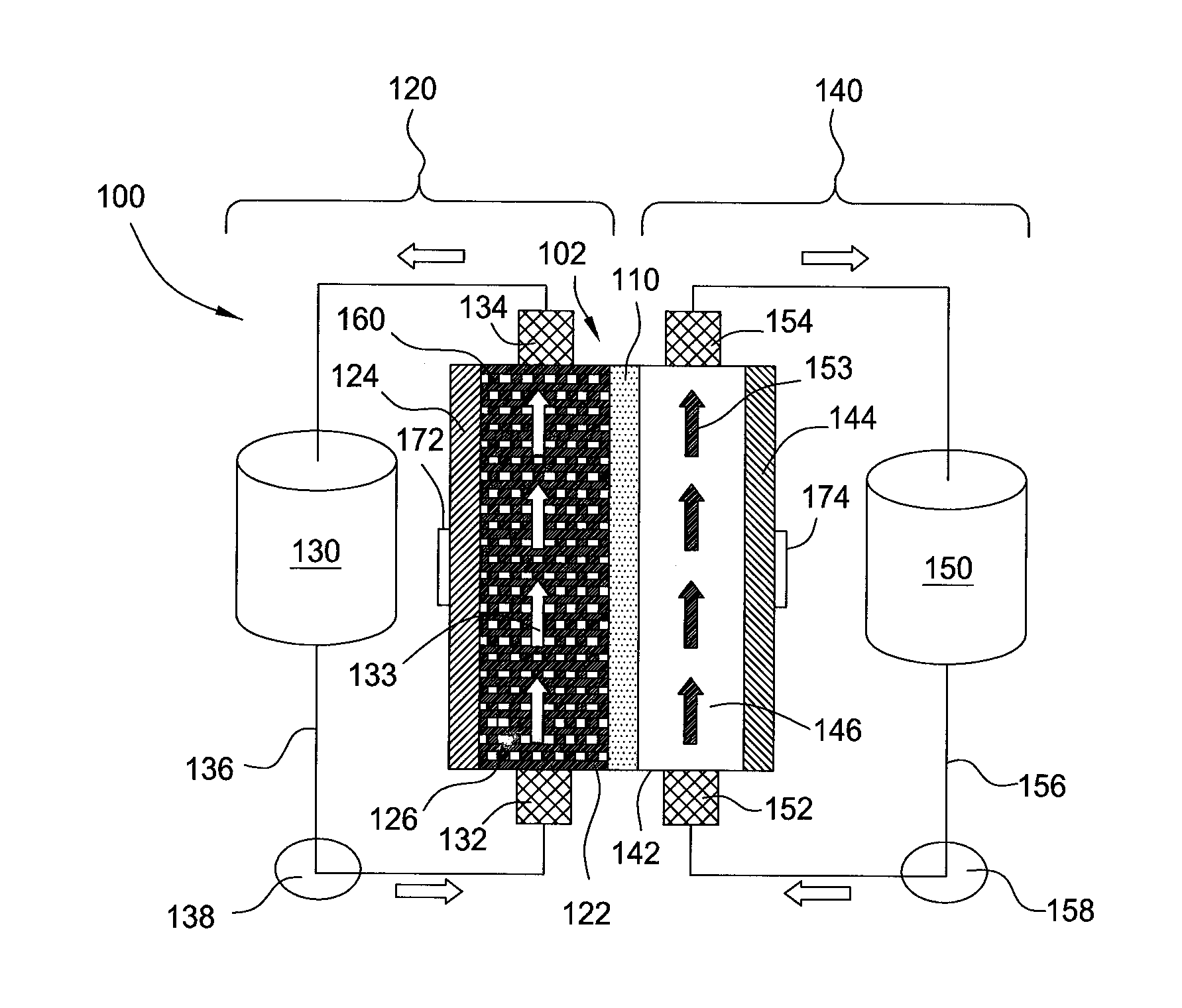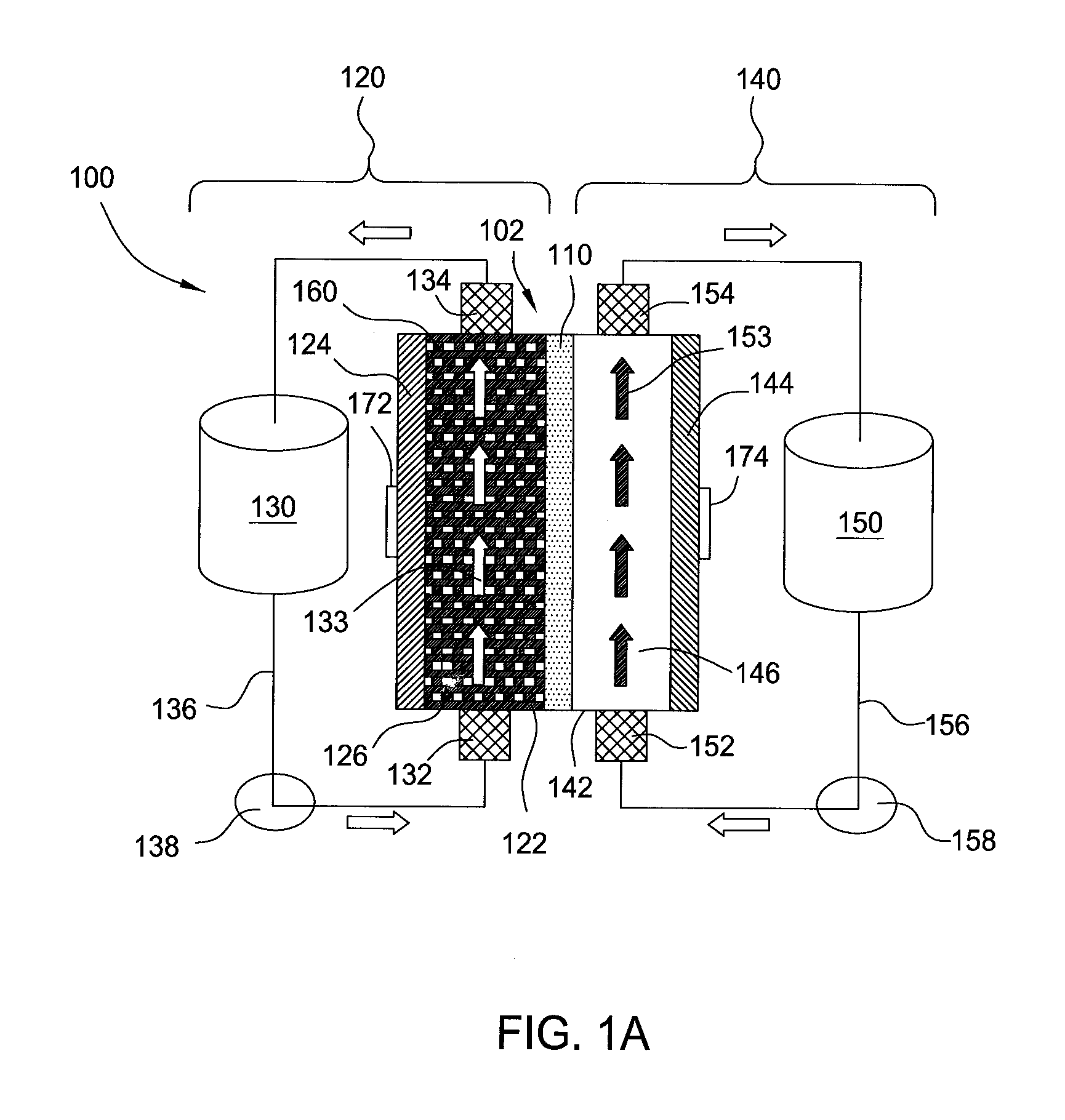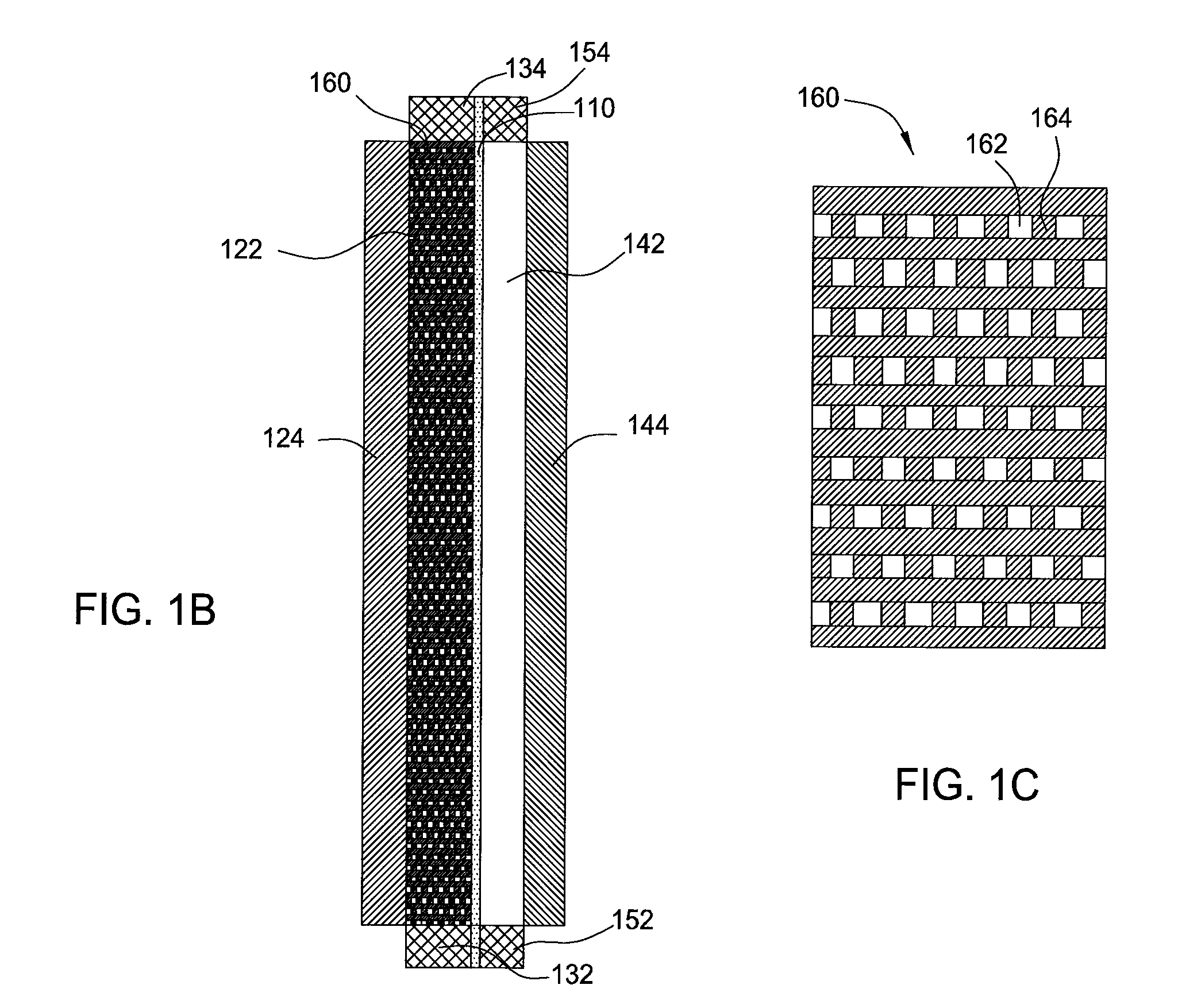Flow battery systems
a battery and flow technology, applied in the field of electrochemical cells, can solve the problems of gas evolution, non-uniform metal build-up over many charge/discharge cycles, energy lost while plating this metal, etc., and achieve the effects of high battery charge rate, uniform metal plating, and high cell current density
- Summary
- Abstract
- Description
- Claims
- Application Information
AI Technical Summary
Benefits of technology
Problems solved by technology
Method used
Image
Examples
Embodiment Construction
[0025]Embodiments of the invention generally provide for flow battery cells, flow battery systems containing a plurality of flow battery cells, and methods for improving metal plating on to a variety of different types of cathodes within the flow battery cell. The flow battery cells described herein have improved cathodes and electrolyte flow paths and therefore provide increased rates for plating metal, uniformity, and morphology over traditional flow batteries. In embodiments described herein, the electrode on which metal is plated may be referred to as the cathode and the same half-cell is called the cathodic side during a charging cycle of the battery. However, the current flow in the battery is reversed and the electrode on which the metal was plated becomes an anode during a discharge cycle of the battery.
[0026]In one embodiment, flow battery system 100 contains a flow battery cell 102 which has a cathodic half cell 122 and an anodic half cell 142 separated by electrolyte memb...
PUM
| Property | Measurement | Unit |
|---|---|---|
| length | aaaaa | aaaaa |
| length | aaaaa | aaaaa |
| thickness | aaaaa | aaaaa |
Abstract
Description
Claims
Application Information
 Login to View More
Login to View More - R&D
- Intellectual Property
- Life Sciences
- Materials
- Tech Scout
- Unparalleled Data Quality
- Higher Quality Content
- 60% Fewer Hallucinations
Browse by: Latest US Patents, China's latest patents, Technical Efficacy Thesaurus, Application Domain, Technology Topic, Popular Technical Reports.
© 2025 PatSnap. All rights reserved.Legal|Privacy policy|Modern Slavery Act Transparency Statement|Sitemap|About US| Contact US: help@patsnap.com



